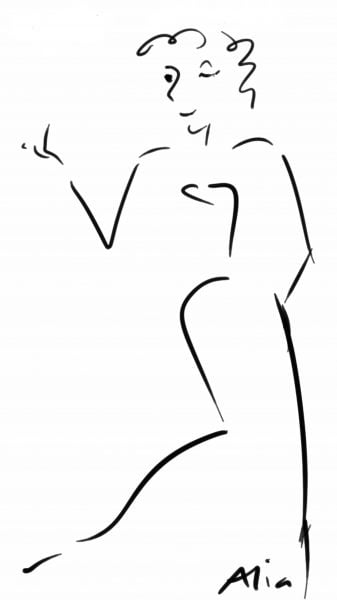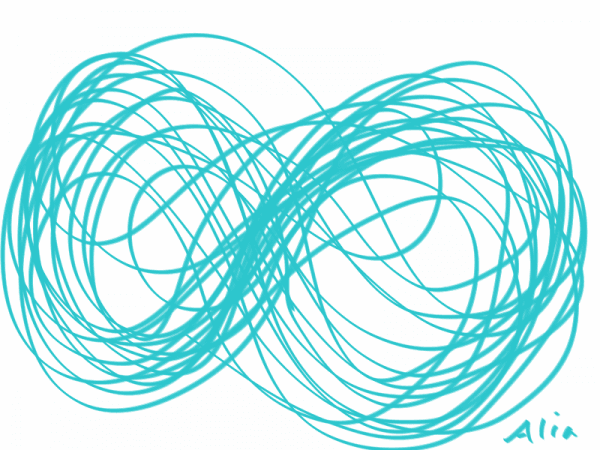Last week, we talked about practicing presence. Here is a little more on that.
When we talk about performance we talk about “stage presence.”
What is it that makes one dancer mesmerizing, even when they are a beginner or don’t do very much, and another, of equal or better technical skill, kind of… meh? Is it their ability to interact with the guests?
No. Some dancers’ style may involve interacting with their guests. Others may be more aloof. But either one can have magnificent presence—or none at all. It’s not so much what you do, but the the way that you do it. Except for shrinking back or looking down. That tends to mess up everyone ; ).
Some of us choose to perform; others dance at home, or with friends at a party. And, as someone who often dances with eyes closed and head down, trust me, even home and party dancing involves presence. And it is practice that makes presence happen. So we don’t need a stage at all–we can just connect–with ourselves, our surrounding, our friends and family!
We do in performance what we do in practice. And performance is basically real life. Presence is useful for all of us.
So how do we develop stage presence?
Because it is a skill, something we can learn. Or rather it is a combination of skills that mix together into something the whole of which is greater then the sum of its parts. So let’s unpack presence and see what we see.
When we are present, we are fully engaged in the moment—the music, the movement, the guests, everything. Since engagement is a big interest of our practice, we can include the main skills of presence during our 20 minutes.
We’ll look today at Confidence. Your questions and observation are welcome, as always.
Confidence

This is one of our most important skills. It’s funny to think of confidence as a skill. It seems like an innate thing—either we have it or we don’t. But confidence comes from experience and success. So how do we cultivate confidence?
Act As If.
Think about this—in studies, folks who held a pencil in their mouths, which made them hold the mouth in a smile, cheered up. People given grainy photocopies to read had to frown to do it—and retained more information than those given clean copies. So it follows that adopting the shape of confidence can help bring us into its reality. This is not the same thing as faking.
We are talking about using our practice to develop skills. Practicing the attitudes and methods of confidence leads to skill. Remember, behavior creates emotion. When we hold ourselves as if we are confident, we feel confident.
Opening.
Opening means allowing ourselves to be vulnerable, and nobody likes that. It’s scary. Closing generally means our posture is compressed, often in the upper chest, around the collar bones. It tends to sink in. The usual prescription is to lift the chest. This is tricky. When we are closed and we force an opening in one area, we often close harder around the area. So we need a better solution.
Certainly some of us have lovely posture, and we’ve gotten it through good luck or a lot of work. I’ve had terrible posture, and the work never really seemed to help. But I noticed when I left the acupuncturist’s that I was effortlessly upright. So I think the work is more about feeling better than doing pushups, though upper body strength is good, too.
One of the things that made a difference for me was something Amar Garcia said in a workshop: “Your confidence is in your throat.” I was so struck by this that I spent most of the rest of the workshop experimenting with relaxing and opening my throat. This is something I invite you to try.
Caution
Above I noted the challenge of opening in one area only to close in another, and that’s something to beware of here, too. The first thought is to lift the chin, but when the head is thrust forward, as it often is, lifting the chin just compounds the problem. So try this.
Gently pull the back of the neck back. Then focus on the front of the neck—the throat. Let the whole area from the mouth to the collarbones soften. Allow yourself to feel the sensuality of the throat. The mouth may want to open. Let it. Let the softness spread. Just feel the feelings of that openness.
Exposing the throat and letting it soften can feel sensual, even sexual, and this may be scary. But this is your practice time, so it is okay. You are safe in your practice space. It wasn’t until I started doing this softening practice that I noticed how I tucked my chin, protecting my throat. Old habits and feelings of unhappiness can be stubborn, so hold yourself kindly in your heart.
Integration
As you get the hang of the softening the throat, bring it into your movement. Allow yourself to move with the throat softened, open and exposed. Allow the head and neck to float upward. Extend the arms, wrists up, and notice the vulnerability in that move, too, the longing to be kissed. Bring that tenderness into your dance.
Allow other areas to open—the spine, the stomach, the low back, the inner thighs, the legs.
If you’d like to get a head start on confidence, as you dance, for some of the time, look at and include all your beloved guests as you move in self-loving, ways with your open, relaxed throat.
If you have a mirror, dance with yourself. We usually look at ourselves critically while we dance. Instead, enjoy dancing with yourself in the mirror. Even in a bathroom mirror we can smile and flirt with ourselves.
It’s fun ; )
For music, Beata and Horacio Cifuentes, Enchanted Gardens full show. Check out that presence!
Love,
Alia
PS look for the next FUN Class: Presence! A Deep Dive into openness and connection in Oriental Dance.






No comment yet, add your voice below!